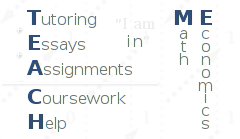Chapter 4: Independence
4.1. Definitions of independence. 4.2. The
-system Lemma; and the more familiar definitions. 4.3. Second Borel-Cantelli Lemma (BC2). 4.4. Example. 4.5. A fundamental question for modelling. 4.6. A coin-tossing model with applications. 4.7. Notation: lID RV s. 4.8. Stochastic processes; Markov chains. 4.9. Monkey typing Shakespeare. 4.10. Definition. Tail
-algebras. 4.11. Theorem. Kolmogorov’s 0-1 law. 4.12. Exercise/Warning.
Independence
are independent sub-
-algebras if for any
,
, and
,
,
are independent random variables if
are independent.
are independent events if
are independent (alternatively,
are independent).
-systems
are independent iff
are independent.
- Note, that for , it is not enough to require that for , , unless each .
- However, random variables are independent iff
Sequences of independent random variables
Given a sequence of distribution functions
, we can construct a sequence of independent random variables
where
such that
for all
.
Stochastic processes and Markov chains
A stochastic process is a collection of random variables
on
. The map
is called the sample path of
corresponding to the sample point
.
A (time-homogeneous) Markov chain
on a finite or countable set
with initial distribution
and 1-step transition matrix
is a stochastic process such that
.
Tail -algebras
The tail
-algebra of a sequence
of random variables is
-
Given a
-algebra
and the decreasing sequence
, in general,
.
- For example, take i.i.d. for , , and . Then, , and is independent of .
(Kolmogorov’s 0-1 Law) The tail
-algebra
of a sequence of independent random variables is
-trivial, i.e. if
, then
, and if
is
-measurable, then for some
,
.
Second Borel-Cantelli Lemma (BC2)
If
are independent, and
, then
.
Kolmogorov’s Law of the Iterated Logarithm
If
are i.i.d.,
,
, then
Strassen’s Law of the Iterated Logarithm
If
are i.i.d.,
,
,
is the linear interpolation of
, and
, then we define
Let
Then,
